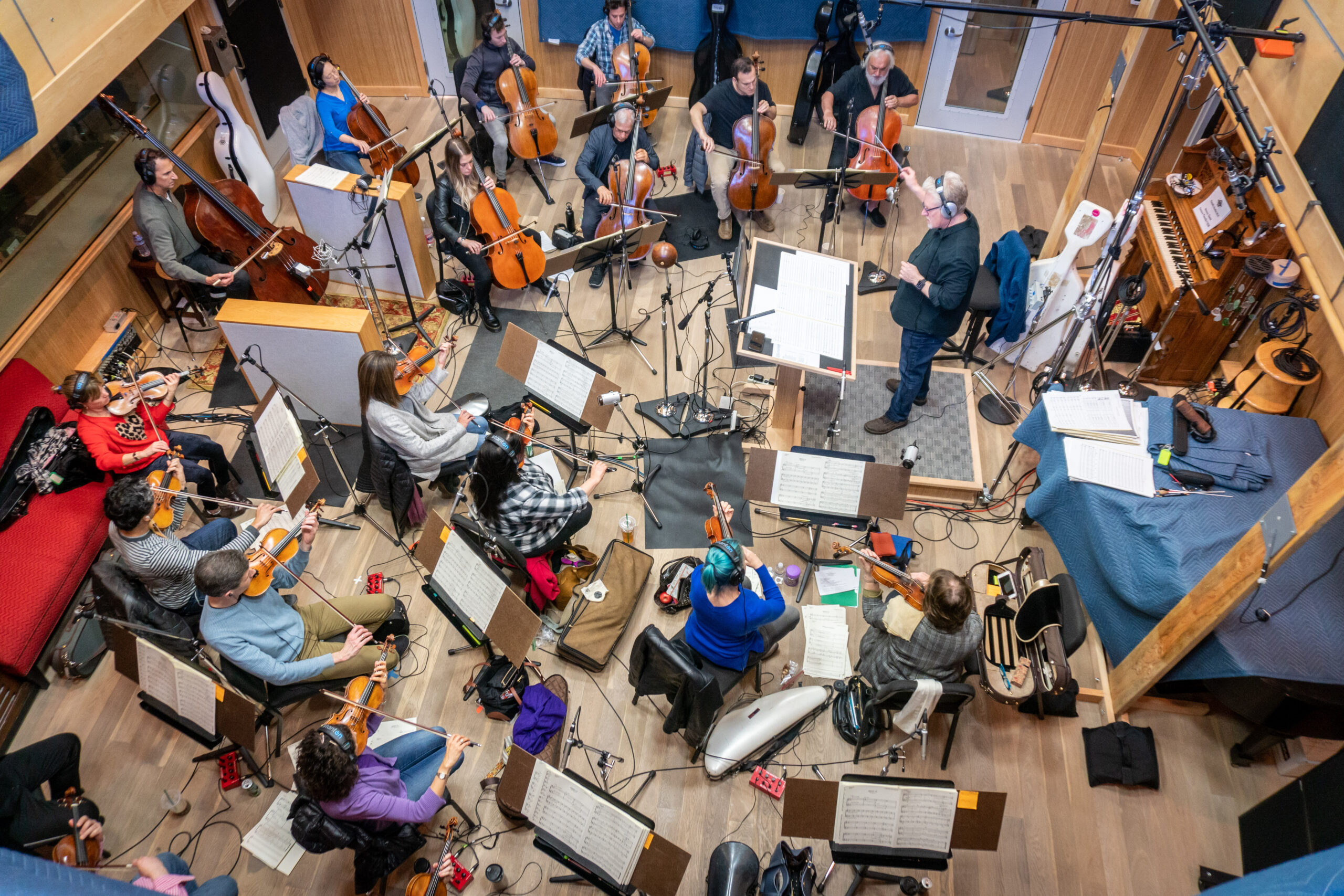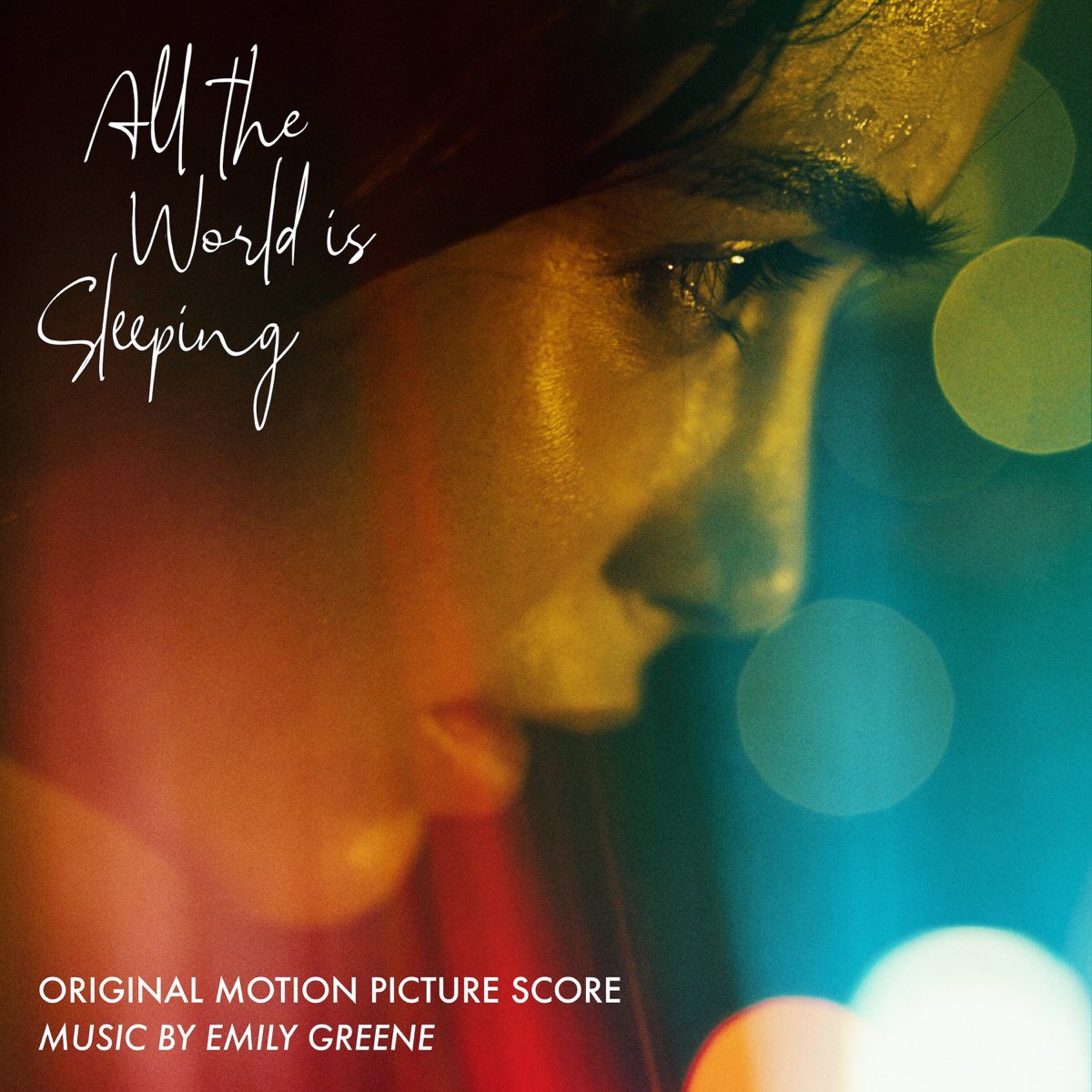
Given a not-so post covid plagued planet that’s reeling from despair, it seems that anguish is now more in the air than ever, particularly among youths turning to drugs as a way out of their anguish. But for already downtrodden Latinas women in the southwest, it’s just a passing of a curse from generation to generation – with Chama (“Scream VI’s” Melissa Barrera) the latest to be struck in a line of familial anguish and mental illness. Desperately trying to retain custody of her little daughter while falling time and time again into a seemingly insurmountable black hole of addiction, Chama’s tragically mesmerizing, time-warped haze powerfully conjured by Emily Greene with her beautifully mesmerizing soundtrack to “All the World is Sleeping.” Her alt. score smoke is full of ghostly vocals, heartbeat pulse rhythms, lyrical Spanish guitar and creeping anguish, not only conjuring the rush of drugs but a ghost-filled southwest in a way that recalls such hypnotically psychedelic, middle of nowhere scores as Elliot Goldenthal’s “Drugstore Cowboy,” Pink Floyd’s “Zabriskie Point,” Ry Cooder’s “End of Violence” and Gustavo Santaolalla’s “21 Grams.” But while there’s an utterly hypnotic quality to her score, “Sleeping” is always attached to this earth with Greene’s thematic sense of empathy, not only fusing with the emotion of Barrera’s knockout performance but also becoming the spirits of the lost, very real generations that Chama’s struggle embodies. While Chama’s ability to surmount her plight is far from certain, there’s no question that Emily Greene has a bright future ahead for her surreally haunting, genre-blending voice as a composer and singer.
Tell us about your musical background and its blend of different styles.
Both of my parents are musicians, so music was always an important part of my household. My dad believes that piano should be the basis of any education in music. Maybe I’m biased, but I think he’s right! I started taking classical piano lessons when I was 2 and went on to study jazz at the Berklee College of Music. But I was also in a math rock band all through college. I grew up listening to everything from Debussy to Ornette Coleman. I don’t know how far back you want to go. The first concert I ever went to was Paula Abdul. I was conceived after a Bruce Springsteen concert in Miami — haha, too much information? — and I think all of that contributes to the musical universe I’m drawing on today.

How would you say you “composed” with you voice as a vocalist on such soundtracks as “The Little Hours,” Maniac” and “Superman & Lois.” And what kind of distinctive quality do you think your talent brought to other composers’ music?
As a session vocalist, I’d say that singing for other composers’ scores is really no different than being hired as part of an orchestra — except in this case, my instrument isn’t a violin or a trumpet, but my voice. It’s always a close collaboration with the composer. A project like “Station Eleven” requires a much different palette than something like “Superman & Lois,” and part of the job is discovering the right sound within yourself.

How did you come on board All the World is Sleeping,” and what did you think of the challenge ahead of you for your first feature score?
I was introduced to the director Ryan Lacen through a mutual friend. She heard my score on a short I had created previously and liked the music. We hit it off pretty quickly and it was off to the races! Composing for film and television is very different from writing music for yourself or with a band. Most people might not realize this, but it’s largely a technical job, so the biggest challenge for me was learning the software needed to compose a score. It’s also a solitary job, which was a big change for me, coming from the band and touring world.
How did past movies about addiction strike you, particularly in their use of music?
You can’t talk about addiction in filmmaking without talking about Requiem for a Dream. Clint Mansell’s “Lux Aeterna” is iconic.

Did any other alternate scores and artists influence you in general?
I am always finding new inspiration around me in many artistic mediums and nature. Some musical artists I love are Telefon Tel Aviv, Aphex Twin, Bjork, Thom Yorke, Johnny Greenwood, PJ Harvey, Theolonious Monk, Chet Baker, Led Zeppelin, Erik Satie, Cocteau Twins, Trent Reznor and Atticus Ross just to name a few. I could go on forever!

How did Dan Romer, whom you did vocals for on “Station Eleven” and “Beasts of No Nation,” abet this score?
Dan is one of my oldest friends and has always been one of my greatest champions and collaborators. We met over 14 years ago, when I emailed him a few songs, and he wrote back within the hour and said he loved my voice. We’ve worked together ever since. It’s hard to come by real friends in life and he is a true friend. He made sure to always be available for feedback and we also got the opportunity to co-write the original song for the film.
What kind of research into the story did you do before scoring the film? If you knew anyone who had addiction problems, did that “help” you?
My family has been deeply affected by addiction, so it wasn’t hard for me to find a way into this story and this world. Fortunately, or unfortunately, that meant I didn’t have to do too much research!

Tell us about developing your approach for “World.” Did an alternative approach immediately seem like the natural way to go, or could you have imagined an orchestral one even working here if there was the budget for it?
There are many ways to approach any creative project. Intuitively, this felt like the best approach, regardless of budget. I love electronic music. I love ambient and industrial and analog synthesizers. This was a great opportunity to combine so much of what I love while speaking to something I care about at the same time.
How did you want to use your vocal talents here? And what do you think they embodied?
The movie is inspired by the true stories of seven women struggling with addiction and recovery in New Mexico. When developing the musical vocabulary for the film, I knew I wanted to do a lot of sound design around my voice to echo the stories of these women.

Tell us about the other musical elements of “World.”
It’s hard to do a project like this alone, and I was fortunate to be able to bring in some of the incredibly talented musicians I’ve played with in the band and touring world. You can hear some of their work in the strings and the guitar, for example.
How did you want to respect Chama’s Hispanic heritage?
This was always very important to Ryan. We brought in an incredible guitarist, my friend Jon Sosin, to play nylon guitar on “The Boxer,” specifically with this in mind. The theme recurs throughout the movie.

How did the character of Chama strike you? What did you like about her, and find frustrating?
I think she is an incredibly well-realized character. We continue to root for her even when she is making mistakes, which is something I think we can all relate to. She never gives up on getting back to her daughter, and if anything is frustrating, it’s the lack of resources and support around mental health and addiction.
Because “World” is specifically about female addicts, does that give the movie and score a different feeling?
This is fundamentally a story about motherhood, so I can’t really imagine a version of this movie in which Chama’s gender identity isn’t central to the story. It also goes without saying, but anyone identifying as a woman is far more susceptible to sexual assault and violence. We see this in the film, and I think Ryan approached the subject with a great amount of care and sensitivity.

How far did you want to push emotion in the score. Were you wary of trying not to become manipulative as such?
Ryan was very encouraging of my artistic vision, but we also walked the tightrope that every composer walks, trying not to get in the way of dialogue or story. It’s always a balancing act.
There’s a mixture of the poetic and the harsh in “World.” How did you want to capture that balance in the music?
I wanted to make sure that there was a tenderness and a violence to the music. There’s always some sorrow in beauty and some beauty in sorrow. I wanted the music to reflect the complexity of Chama’s situation, without getting lost in her despair.

What’s it like to capture the “rush” of drugs, especially when you’re a composer who trying to imagine what it’s like going through those highs and lows?
The reason so many people do drugs in the first place is because they’re in pain…they’re uncomfortable…they’re at odds with the world, maybe. I wanted the music to reflect that pent-up energy and the chaos that using can create.
One addict describes the experience of being in detox as being lost in time. How do you think the score captures that surreal experience, especially given the film’s time-jumping structure?
The score helps create some continuity, I think, as the film jumps around. It plays like a fever dream, and I think the score and some of the repeated cues can help ground us in Chama’s subjective experience.
In that respect, how did you want to create the sound of the musical dissonance of the drug life with an overall hypnotically melodic sound?
Haha, I think you answered your own question here. That’s exactly what I was trying to do. The “how” of it all is what you hear in the score!

Beyond its drug nature, how did you want the score to capture the southwestern environment?
I love reverb! I definitely think a healthy dose of reverb gives the impression of the wide-open spaces that make the desert so special.
There are likely viewers who might not be particularly sympathetic to Chama and addicts like her, especially ones who place their children in jeopardy. Do you hope this movie, and your music brings more of an understanding to them? Or do you think being sympathetic doesn’t preclude your music from reflecting their own decisions?
Yes. Addiction is an illness. We should always try to empathize with people who are suffering, as well as the families who suffer alongside them.

What’s ahead for you as a composer and musical artist, as well as a vocalist?
We’re about to release a new version of “Let Me Be the One,” the original song that Dan Romer and I co-wrote for the film. I’m also releasing new music of my own. Search for Emily Greene on Spotify or wherever you listen to music. The first two singles, “Show Me” and “Husband Song” are out now. More coming soon! As for composing, working with Ryan was such a pleasure. I hope we have the chance to collaborate again. Composing for film is kind of like being in a band with the director and I’d love to work with some more amazing bandmates.
Watch “All the World is Sleeping” on VOD and in theaters, with Emily’s score available on This is What You Had in Mind HERE.
Visit Emily Greene’s web site HERE


